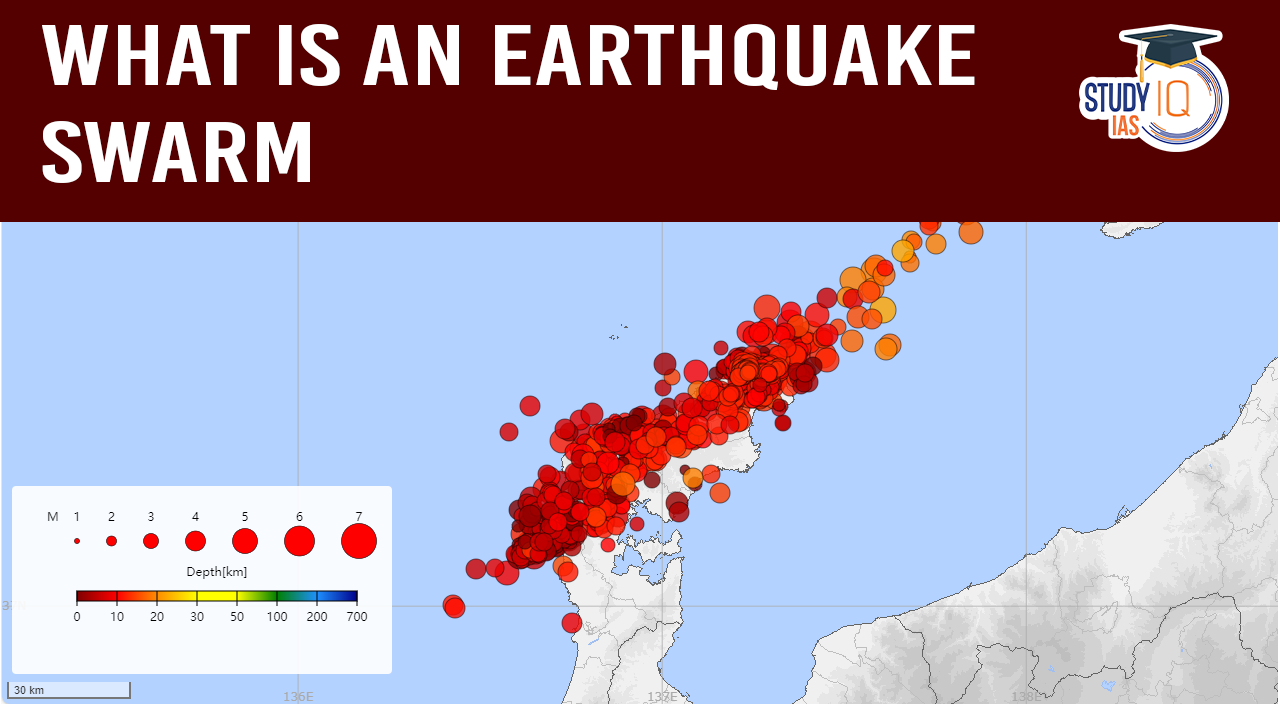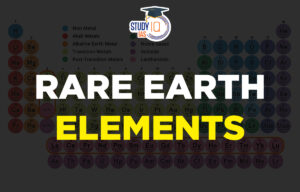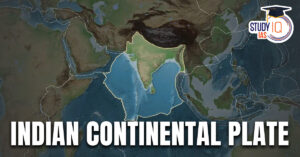Table of Contents
Context: A state of emergency has been declared on Greece’s Santorini and the nearby islands of Ios, Amorgos, and Anafi after a swarm of undersea earthquakes.
What is an Earthquake Swarm?
- An earthquake swarm refers to a sequence of multiple seismic events of comparable intensity that occur in a small geographic area over a short period of time.
- Unlike earthquake sequences, swarms lack a single large mainshock, and the tremors continue intermittently.
- Swarms are usually short-lived, but they can continue for days, weeks, or sometimes even months.
Causes of Earthquake Swarms
Earthquake swarms can be triggered by various geological and environmental factors, including:
- Volcanic Activity – Magma movement beneath the Earth’s surface can cause swarms, often signaling potential volcanic eruptions.
- Tectonic Stress – Gradual shifts in the Earth’s crust can release stress in clusters rather than a single major quake.
- Hydrothermal and Geothermal Processes – Underground fluids, such as water or gas, can weaken rock formations and trigger seismic activity.
- Human-Induced Activity – Activities like mining, fluid injection (as in geothermal energy production or wastewater disposal), and reservoir-induced seismicity (from large dams) can lead to earthquake swarms.
Effects of Earthquake Swarms
- Structural Damage – While individual quakes in a swarm are often moderate, repeated shaking can weaken buildings and infrastructure.
- Increased Seismic Hazard – Some swarms precede larger earthquakes, though not always.
- Public Concern and Emergency Response – Extended swarms can cause fear and require preparedness efforts, even if they don’t lead to a major quake.
Earthquake Swarms in India
- Peninsular India has experienced earthquake swarms in the past.
- Cause: Water Seepage and Pressure Buildup
- Heavy rainfall increases the water table, leading to water seeping into underground rock fractures.
- A 2008 study found that for every 10-meter rise in the water table, the pressure inside rocks increases by 1 atmosphere (atm).
- This pressure buildup is released in the form of earthquake swarms.


 Rare Earth Elements, Metals, Magnets, Ap...
Rare Earth Elements, Metals, Magnets, Ap...
 Places in News for UPSC 2025 for Prelims...
Places in News for UPSC 2025 for Prelims...
 Indian Continental Plate is Splitting Ap...
Indian Continental Plate is Splitting Ap...





















